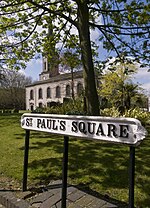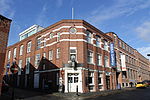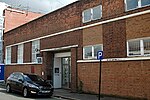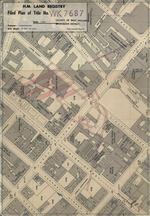The Birmingham Assay Office, one of the four assay offices in the United Kingdom, is located in the Jewellery Quarter, Birmingham. The development of a silver industry in 18th century Birmingham was hampered by the legal requirement that items of solid silver be assayed, and the nearest Assay Offices were in Chester and London. Matthew Boulton and Birmingham's other great industrialists joined forces with silversmiths of Sheffield to petition Parliament for the establishment of Assay Offices in their respective cities. In spite of determined opposition by London silversmiths, an Act of Parliament was passed in March 1773, just one month after the original petition was presented to Parliament, to allow Birmingham and Sheffield the right to assay silver. The Birmingham Assay Office opened on 31 August 1773 and initially operated from three rooms in the King's Head Inn on New Street employing only four staff and was only operating on a Tuesday. The first customer on that day was Matthew Boulton.The assay office is managed by a board of 36 "Guardians of the Standard of Wrought Plate in Birmingham", between six and nine of whom must be connected with the trade.
The hallmark of the Birmingham Assay Office is the Anchor, and that of the Sheffield Assay Office was the Crown. A story about the origins of this hallmark goes that meetings prior to the inauguration of both Birmingham and Sheffield Assay Offices in 1773 were held at a public house called the Crown and Anchor Tavern on the Strand, London. It is said that the choice of symbol was made on the toss of a coin which resulted in Birmingham adopting the Anchor and Sheffield the Crown (which was changed in 1977 to the White Rose of York).Services provided by the office include nickel testing, metal analysis, plating thickness determination, bullion certification, consultancy and gem certification. Platinum was brought within the Hallmarking Act 1973.











